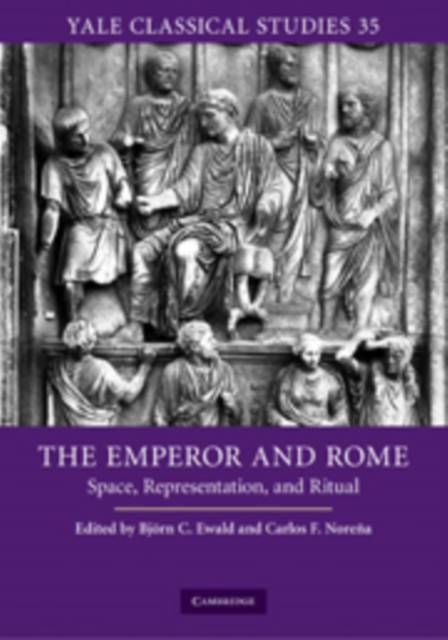
Je cadeautjes zeker op tijd in huis hebben voor de feestdagen? Kom langs in onze winkels en vind het perfecte geschenk!
- Afhalen na 1 uur in een winkel met voorraad
- Gratis thuislevering in België vanaf € 30
- Ruim aanbod met 7 miljoen producten
Je cadeautjes zeker op tijd in huis hebben voor de feestdagen? Kom langs in onze winkels en vind het perfecte geschenk!
- Afhalen na 1 uur in een winkel met voorraad
- Gratis thuislevering in België vanaf € 30
- Ruim aanbod met 7 miljoen producten
Zoeken
The Emperor and Rome
Space, Representation, and Ritual
€ 206,45
+ 412 punten
Omschrijving
The transition from republic to monarchy with the accession of Augustus heralded the transformation not just of the Roman political system but of the city of Rome itself. This volume, written by some of the foremost scholars from around the world, addresses three main topics: the impact of imperial building programs on the configuration of space within the city and on the evolution of Rome's urban image; the various ways in which the figure of the emperor himself was represented, both visually and symbolically, in the city's urban fabric; and the performance of rituals and ceremonies that expressed key imperial ideals and values and enabled communications between the emperor and important collectivities in the city. The contributors build on important recent developments in research: increased archaeological excavation and restoration, the proliferation of digital technologies, and the greater attention paid by scholars to the centuries after Augustus.
Specificaties
Betrokkenen
- Uitgeverij:
Inhoud
- Aantal bladzijden:
- 388
- Taal:
- Engels
- Reeks:
- Reeksnummer:
- nr. 35
Eigenschappen
- Productcode (EAN):
- 9780521519533
- Verschijningsdatum:
- 2/12/2010
- Uitvoering:
- Hardcover
- Formaat:
- Genaaid
- Afmetingen:
- 175 mm x 249 mm
- Gewicht:
- 916 g

Alleen bij Standaard Boekhandel
+ 412 punten op je klantenkaart van Standaard Boekhandel
Beoordelingen
We publiceren alleen reviews die voldoen aan de voorwaarden voor reviews. Bekijk onze voorwaarden voor reviews.








